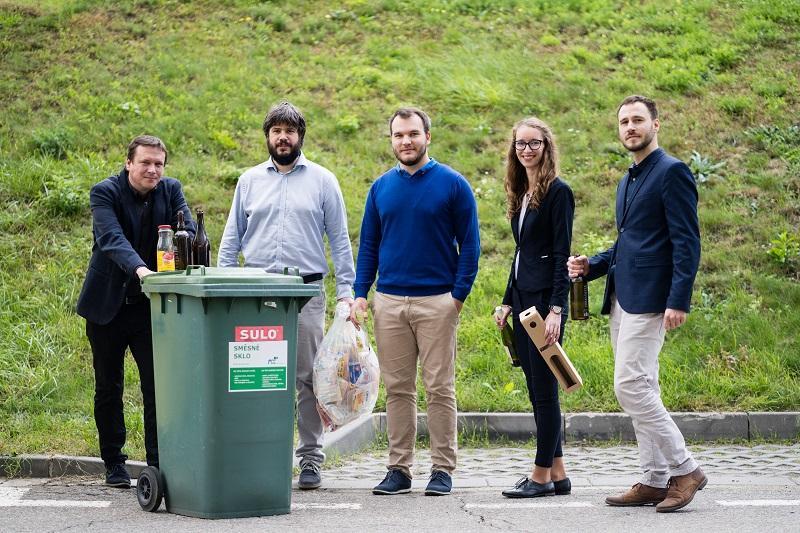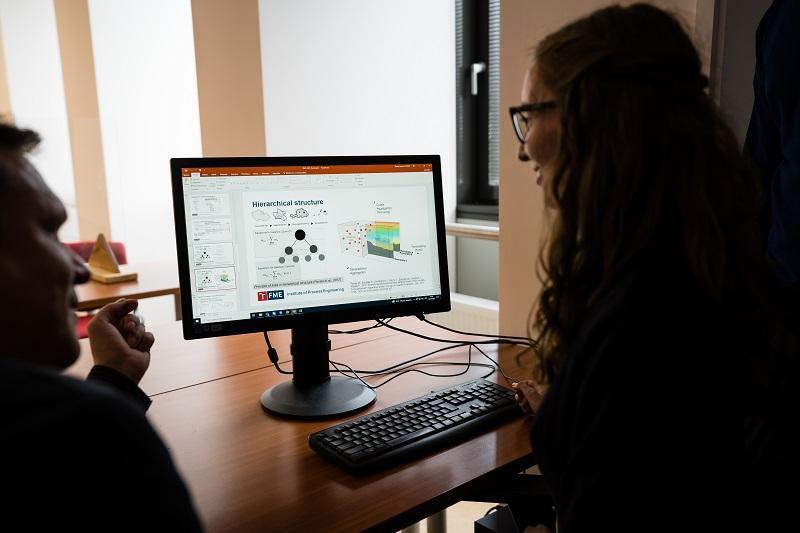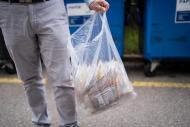Ideas and discoveries
Waste is science. Thanks to experts from BUT, the Czech Republic has a forecast of their production

Are we sorting enough? How many recyclable materials needlessly end up in black bins? And above all, how much waste will residents and companies in the Czech Republic produce in the coming years? Experts from the Faculty of Mechanical Engineering of BUT were looking for answers. For the Ministry of the Environment, they created the TiramisO software, which, based on a mathematical model, predicts the production of waste for the next ten to fifteen years and also offers various scenarios of the expected development.
Data is key to preparing for the future, and this is no different in waste management. Until now, forecasting of waste production in the Czech Republic has been fragmented: everyone had their own method, the sum of forecasts for individual municipalities or regions did not correspond to predictions for the entire republic. That will change now. Experts from the Institute of Process Engineering have developed a unique tool on which the ministry and local governments will build their future plans. "We came up with a certified waste forecasting methodology. And based on it, they created software that, based on the results of previous years, estimates the future amount of municipal, but also construction or healthcare waste," the head of the research team Martin Pavlas from the Institute of Process Engineering BUT says.
And with municipal waste, i.e. with waste produced mainly by citizens, there is also a second certified methodology, focused on carrying out analyses of municipal waste. The analyses are intended to indicate how citizens sort and how many recyclable materials end up in black bins. "In layman's terms, we would say that we have created a guide according to which the analyses will be followed uniformly so that the results are comparable and, above all, repeatable," Pavlas adds.
More uniform input data should then refine the predictions of the mathematical model, which calculates how the amount of municipal waste will develop in the coming years. "The lowest territorial unit for which we can make a prediction are the so-called municipalities with extended jurisdiction. There are 206 of them in the country, followed by 14 regions, and we also have forecasts for the entire Czech Republic. We have developed a mathematical model that can process a large amount of data for all these units and at the same time distinguish a wide range of different types of waste," Pavlas describes, adding that when updating the data, calculating a new forecast will take hours to days. An ordinary user will not feel the complexity of the calculations; the software will display the calculated results from the database on the website within seconds.
The outputs of the prognostic model will be of interest not only to the ministry, but also to municipalities or investors and companies dealing with waste disposal or recycling. In addition to the forecast, which is a purely statistical model setting trends based on past data, the tool will also offer the so-called scenarios. "Historical data do not reflect, for example, changes in legislation, promotion of waste sorting, or increasing landfill fees. Statistics can't take these things into account, and that's why an expert estimate comes into play, which an expert at the ministry enters into the system and we calculate it and project it to the level of regions and two hundred micro-regions," Pavlas explains.
When science doesn't smell
The website and software are the result of a long and not always fragrant three-year work of process engineering experts. Part of their research was a detailed analysis of mixed municipal waste. In other words, they examined the contents of the black bin. "The measurement consisted of manually sorting samples with a volume of one cubic meter into approximately 40 monitored waste groups. The research took place in various regions, including in Brno, Prague and Vysočína" Jiří Gregor from the Institute of Process Engineering, who coordinated field work throughout the Czech Republic, says and adds: "Paradoxically, the samples where citizens do not sort very much were easy to sort , because their sample was full of plastic, cans, paper, glass or, for example, coffee capsules, which is relatively easy to analyse. The samples from more honest citizens were more difficult, where a little bit of bio waste appeared in a combination of a mixture of everything possible," Gregor recalls.
The end of waste landfilling, planned in the Czech Republic for 2030, assumes that most of the waste will be used as a secondary raw material, or at least for energy. According to Pavlas, the Czech Republic has reserves in both of these respects. "For residual, materially unusable waste, we do not have sufficient processing capacities, such as devices for energy utilization of waste, which can turn otherwise unusable waste into energy, i.e. electricity or heat. The second big challenge is sorted waste, which we do not yet use sufficiently for the production of new materials. In particular, the rate of use of plastic is relatively low and depends on the material composition of the specific product or packaging itself. Only 30 to 60 percent of the contents of the yellow container will be used materially, everything of course depends on the current market development and the demand for secondary raw materials," Pavlas adds.
The pressure on municipalities to sort more will increase in the coming years along with landfill fees. The collection of sorted waste is not cheap either. "I expect a significant increase in waste management costs, thus also pressure on municipal budgets and, by extension, citizens," Pavlas thinks. Economic and other aspects related to the "waste revolution", as the Czech Republic's transition from a linear to a circular economy can be called, will be addressed by experts in the CEVOOH project (Centre for Waste and Circular Economy), where a consortium of eight leading research organizations will focus on the issue and universities.
For cleaner and "greener sky"
Science: Changes in waste management could buy us time to tackle the climate crisis
Device is being developed at strojLAB that students hope will help them succeed in a prestigious biotechnology competition
Software as a bachelor thesis helps with soil erosion research
New biogas treatment technology: BUT cooperates with top European teams
